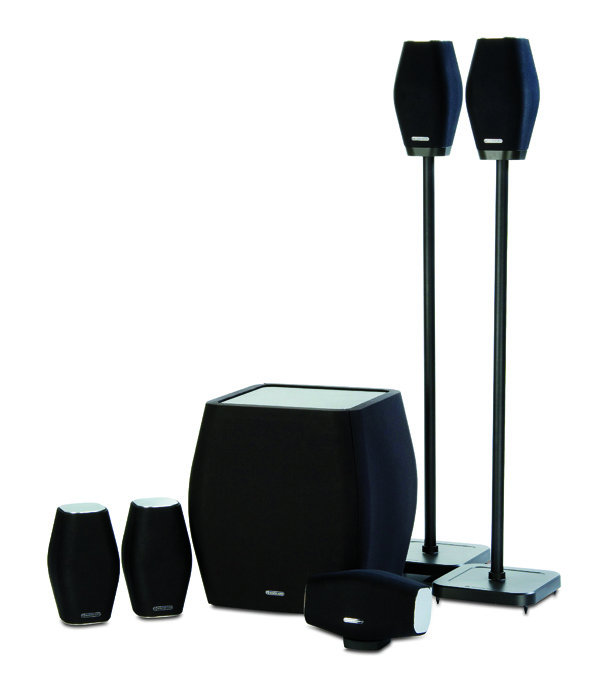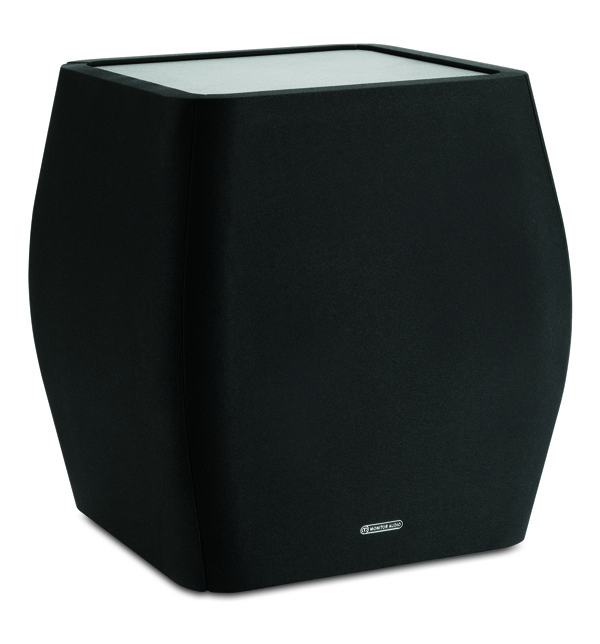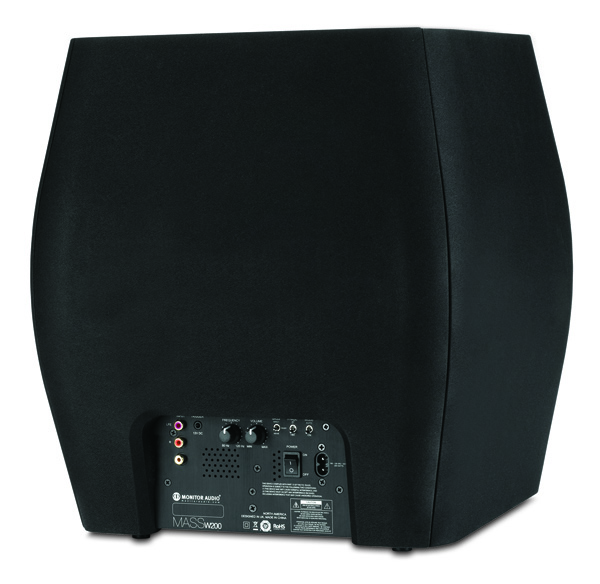Monitor Audio MASS 5.1 Speaker System Page 2

All Dressed Up and All Sorts of Places to Go
Given that the hidden binding posts make setting up the MASS system a little more complicated than most speakers, by the time I had the speakers connected to Cambridge Audio’s Azur 751R upsampling AV Receiver and calibrated, I was a little impatient and ready for some seriously fun listening. The Incredible Hulk may not be the hottest new Blu-ray release on store shelves, but it’s a heck of a surround sound workout and usually a good indicator of whether a 5.1 speaker system and I are going to get along. Chapter 5 in particular is a great stress test of not only dynamic range capabilities, but subwoofer output as well.
As expected, given the manufacturer’s specs, the MASS W200 subwoofer isn’t capable of delivering the film’s lowest frequencies, and yet I found myself more than impressed by its performance. You definitely get every ounce of the Fee, Fi, and Fo, even if the fum gets lost along the way. But that’s unsurprising when throwing a soundtrack with strong, deep bass at a subwoofer that only claims extension down to 30 Hz. The surprising thing is how well the W200 handles the bass down to that point. If you’re not intimately familiar with the film, you wouldn’t miss a thing, especially when Ed Norton’s eyes start glowing green and the growling rumble that permeates the room tickles your naughty bits. Likewise, when the massive empty tanks start sliding across the scene’s factory floor, it’s a tactile experience. You literally feel it, more so than hear it. Despite that, the subwoofer is far from flabby, even without the benefit of equalization.

The other thing this scene underscores is the beautiful continuity between the W200 and MASS satellites. There’s no sense of disconnect, no real reminder that you’ve got five boxes around the room making squeaky noises and one of the floor making things go boom.Unlike so many speakers of this size, the MASS 10s and MASS Centre cross over beautifully at 100 Hz when freestanding and 90 Hz when wall-mounted. Monitor Audio suggest an 80-Hz crossover all the way around, and in fact the system is capable of such, but I found that raising the crossover a little took a weensy bit of strain off the speakers without sacrificing omnipresent bass. The company attributes the MASS satellites’ incredible bass performance to their rifled rear-firing reflex port, and the fact that their 4-inch C-CAM bass driver is tie-bolt fixed to the back of the cabinets. I took a difficult peek inside two of the satellites (one of the 10s and the Centre) and can confirm that each is as gorgeously constructed on the inside as out, with a magnet for the bass driver that’s bigger than the cone itself, and all the bits and pieces beautifully braced. I don’t, by the way, recommend taking apart one of these beauties yourself. (And no, my telling you not to do something I did is not double irony, nor even regular garden-variety Alanis Morissette irony. It’s just plain informed hypocrisy.)
After getting the end of the one-piece sock that serves as the speaker’s grille scrunchied back up inside and the end cap screwed back in place (no easy task, I assure you), I popped in my new reference disc for dialogue clarity: Cloud Atlas on Blu-ray. The post-apocalyptic “After the Fall” sequences in particular can seriously strain the ears via the best of speakers, especially given the devolved, pidgin dialect spoken by Tom Hanks’ character. Even without the benefit of room correction, though, the MASS system delivered the dialogue with the utmost clarity, rendering every yibberin’ word cleanly and precisely. Since, again, the MASS Centre is merely a MASS 10 turned on its side, it doesn’t exhibit the drastic lobing and comb filtering suffered by many woofer-tweeter-woofer-configured center channels. But its dispersion characteristics are, of course, at a right angle to that of the front left and right speakers. Whereas the MASS 10s, when vertically placed, deliver wonderfully wide dispersion, when positioned horizontally the Centre’s dispersion becomes more vertical. The sound is wonderfully consistent as long as you’re no more than 40 degrees or so off axis horizontally. After that, the high frequencies start to roll off and imaging suffers, although dialogue clarity remains impeccable.

The fix for this is simple, of course. I merely stuck four of the extra rubber feet on the MASS Centre’s end cap and stood it up horizontally. True, the logo was now sideways, but imaging improved drastically off axis.
Stand and Deliver
Standing the Centre upright also improved front soundstage imaging with multi-channel music. As I’ve said in previous reviews, I know Fleetwood Mac’s Rumours on DVD-Audio isn’t the height of high fidelity, but it’s a disc whose sonic characteristics are ingrained in my auditory memory. I’ve heard very few speaker systems—especially at this price point—capture the supremely holographic qualities of the mix any better. On “You Make Loving Fun,” Stevie Nicks’ spooky “ahh-ahh-ahh” backing vocals, which kick it at around the 0:50 mark, waft through the air in complete defiance of speaker location. And the song’s loping bass line, which tiptoes all over the divide between subwoofer and satellites, doesn’t seem torn in the slightest. It’s an incredibly cohesive, yet utterly expansive sound experience.
Normally I wouldn’t ask speakers this small to perform any sort of stereo duties in anything other than the near field, but I couldn’t resist throwing another recent favorite—Hans Zimmer’s Man of Steel score on CD—at the MASS system just for kicks. Amazingly, in 2.1 mode, the speakers delivered yet another astoundingly holographic soundstage that wonderfully penetrated the room. The only downside was volume. The score packs the sort of dynamic range one rarely hears on any format these days, much less CD, and two of the MASS satellites alone struggled to reach appreciable volumes without crumbling at the knees during the most dynamic bass peaks of the third cut, “Sent Here for a Reason.” Adding the other three satellites to the mix with a bit of Dolby Pro Logic II processing helped immensely, allowing me to listen at substantial volumes without straining any given speaker in the slightest. Raising the crossover point would have been another option, but not an ideal one, in my opinion, given how seamlessly the sub and satellites integrate at 90 to 100 Hz.
If it seems like I’m being overly picky on a full 5.1 speaker system that retails for $1,299, it’s only because the system does so much so well that it raises one’s expectations beyond a reasonable point. I’m not saying Monitor Audio’s MASS speaker system is perfect; I’m merely saying that when it does exhibit any shortcomings, pointing them out sort of feels like scolding a gifted grade-schooler for bringing home an A-minus in differential calculus.
























































